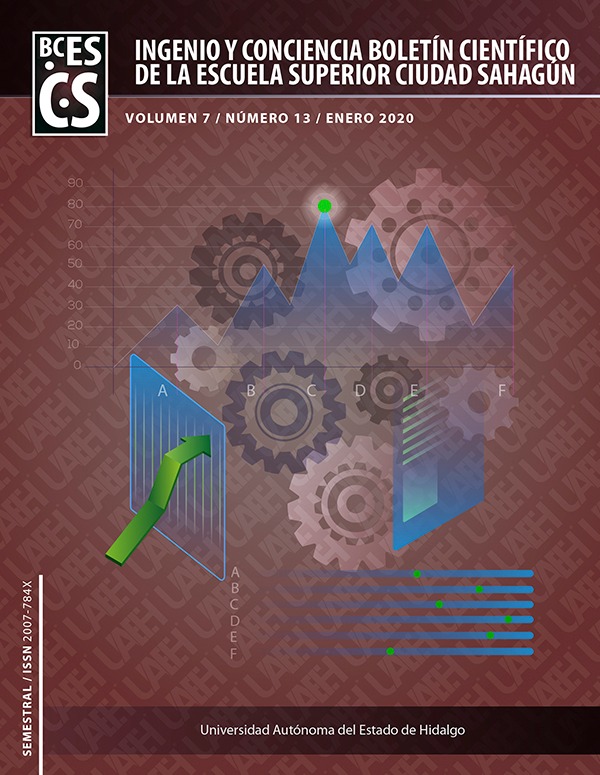Design of a distribution network using data obtained from an application programming interface
Abstract
This article studies the problem in the distribution of consumer products carried out by companies in the food sector. The lack of efficiency in the design of the distribution network, based on reliable information on limitations and transfer distances to customers, are the main factors that affect the planning of the supply chain. One example is a case of a distribution food products problem, that must be delivered through a government program of food safety in school breakfasts, whose target population are students enrolled in basic level schools in the southeast area of Hidalgo State. A design of a distribution network in two steps or levels is proposed that identifies the routes for the distribution of these products.
Using technological tools such as Google API for calculating transport distances, cluster techniques and software for data analysis, a distribution proposal is developed which is obtained through a model that is solved by a genetic algorithm applied to the Travelling Salesman Problem (TSP). The results of this proposal include an overview of the location of all customers, the actual distances between them, consumption and the possible routes that should be considered in the planning of this supply chain. This proposal is also useful for making decisions about other aspects such as: the correct supply of products, the selection of possible distribution centers, the design of logistics based on distribution costs and the distance traveled by the transports, generating as a result a significant economic savings in distribution that will be allow to plan a future expansion and coverage in other geographical areas.
Downloads
References
FAO, (2013). Alimentacion escolar y las posibilidades de compra directa de la agricultura familiar. Estudio de Costa Rica. Brasil.
Cuevas, G. (1995). El Programa de alimentación escolar urbano marginal de la República Dominicana. Publicaciones de la Secretaría de Estado de Educación, Bellas Artes y Cultos y del Sector Educación del Programa de las Naciones Unidas para el Desarrollo (PNUD). Plan Decenal de Educación en Acción, Secretaría de Estado de Educación, Bellas Artes y Cultos. Santo Domingo, República Dominicana
DIF (2018) http://sitios.dif.gob.mx/dgadc/direccion-de-alimentacion/estrategia-integral-de-asistencia-social-alimentaria/ consultado el 19/05/2019
Hugos, M. (2018). ESSENTIALS of Supply Chain Management. New Jersy: Jhon Wiley & Sons, Inc.
Christopher, M. (2016). Logistics & Supply Chain Management. Great Britain: Pearson.
Alan Rushton, P. C. (2014). THE HANBOOK OF LOGISTICS & DISTRIBUTION MANAGEMENT. Great Britain and United Estates: Kogan Page.
S.M. Hatefi, F. J. (2013). Robust and reliable forward-reverse logistics network desing under demand uncertainty and facility disruptions Elsevier Inc, 2-13.
András Királyn , J. A. (2014). Redesing of the supply of mobile mechanics based on a novel genetic optimization algorithm using Google Maps API. Elservier, 122-129
Yong Wang, X. M. (2017). Profit Distribution in Collaborative Multiple Centers Vehicle Routing Problem. Journal of Cleaner Production, 2-15.
JiquanWang, O. K. (2016). Multi-offspring genetic algorithm and its application to the traveling salesman problem. ELSEVIER, 2-8
Helsgaun, K. (2014). Solving the clustered Traveling Salesman Problem Using the Lin-Kerninghan-Helsgaunn Algorithm. Roskilde University, 2-12.
Ashour, A. F.-S. (2015). OPTIMIZATION OF TRAVELING SALESMAN PROBLEM . DE GRUYTER OPEN, 240-244.
Carr, J. (2014) . An Introduction to Genetic Algorithms. 1-14
Thomas Liebig, N. P. (2016). Dynamic route planning with real-time traffic. Information Systems, 2-12.
Vandeviver, C. (2014). Applying Google Maps and Googles Street View in. Springer, 2-6.
Ooms, J. (2014). The jsonlite Package: A Practical and Consistent Mapping. UCLA, 1-14.
Linet Ozdamar, M. A. (2014). Models, Solutions and Enabling Technologies in Humanitarian Logistics. European Journal of Operational Research, 4-10.
Granillo-Macías, R., Olivares-Benítez, E., Martínez-Flores, J y Caballero-Morales, S. (2018). Analysis of logistics cost in contract agriculture: the case of barley supply chain in Hidalgo, Mexico. Custos e agronegocio on line. 164-183.
Fahui, W. and Yanqing, X. (2011). Estimating O-D travel time matrix by Google Maps API. implementation, advantages, and implications. Ann. GIS. 17(1):199-209.
Wang, Y., Ma, X, Lao, Y and Wang, Y. (2013). A fuzzy-based customer clustering approach with hierarchical structure for logistics network optimizacion. Expert Systems with Applications.
Anily, S., Bramel, J., & Hertz, A., v. (1999). A 5/3-approximation algorithm for the clustered traveling salesman tour and path problems, Operations Research Letters, 24, 29-35.











